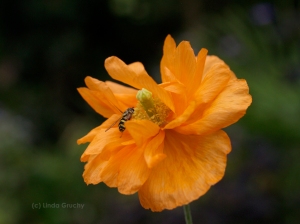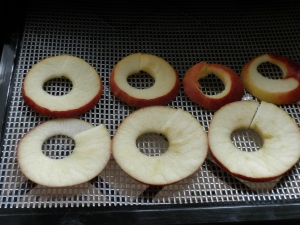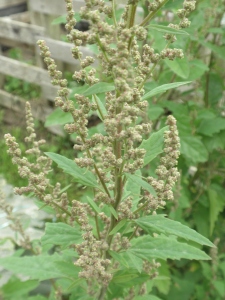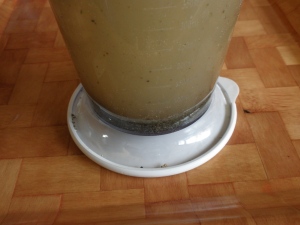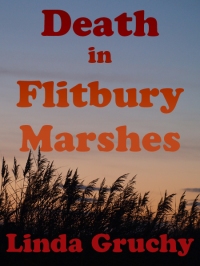One of the favourite dishes in Kate Harrison’s 5:2 Facebook group, especially on fast days, is “courgetti”, long strips of courgette either steamed, boiled briefly, or stir-fried. It takes the place of pasta and is delicious.
Courgettes (zucchini) are one of the easiest and most productive vegetables to grow, producing all summer long. Another vegetable which is very productive is runner beans. Climbing French beans are also good. I thought it would be good fun if we had a “5:2 grow along” to encourage people who haven’t grown any vegetables before.
To grow one courgette plant and a wigwam of runner beans, all we need is two square yards/metres of garden space in a sunny position. I don’t have this, which is why I took on an allotment, and now I have space for all sorts of interesting foods.
For those who lack suitable garden space, beans and courgettes can be grown in large tubs, but are very demanding with regard to watering and feeding. If you have to use tubs, 18inches in diameter is the minimum, realistically, and it’s better to get cubic shaped tubs or the flat bottomed straight sided ones, especially for the runner beans, because once they start to grow they are vulnerable to being blown over. Some people create very attractive mixed tubs of beans, tomatoes and other things like nasturtiums. The best compost for this is John Innes no 3, but be aware that this is not completely pat free. New Horizons grow bag compost is a good choice. Be generous because the moisture stability is greater with more compost.
I’ll be working on the principle of 2 square yards, one square yard will hold the courgette plant, the other will hold a wigwam of beans. If people have more space they could grow more courgettes and beans, or different crops as well. I will be going right down to basics, so I hope those who are experienced gardeners will humour me.
Both beans and courgettes are sensitive to frost and even cold weather, so they are started off quite late in the gardening year. The gardening books will say you can sow direct, but slugs love young beans and courgettes, so it’s safer to start them off in pots on a window sill or a greenhouse. Beans should be sown about two weeks before the last frost, but I tend to start them earlier than this and protect them if a frost is threatened. In the south of the UK it’s unusual to get frosts end of May or early June, but it does happen from time to time.
We have a couple of weeks before we need to sow the beans and seeds, but now is the time to prepare the soil.
One very important aspect of digging is the removal of perennial weed roots like couch grass. An uncultivated allotment, even one covered in mulch, will fall victim to re-infestation of this beastly grass from the paths surrounding the plot within a year.

Couch grass roots. Remove all you see.
Starting off
- Pick a sunny spot in the garden. The sunnier the better because courgettes form more female flowers in full sun.
- Mark out 2 square yards with boards or canes, and if this is part of a lawn cut round the edge to a depth of about 2 inches, preferably with a half-moon cutter, but a spade will do. (The problem with a spade is it’s slightly curved to the edge won’t look so straight.)
- Divide the grass inside the marked out area into approximately eight inch wide strips with the spade or half-moon.
- Lift the turf by sliding the spade under the grass, a couple of inches thickness. It should peel up like orange peel. Put the turfs to one side. Keen gardeners rot this down to produce loam for potting etc. It can also be put in the base of the trench.
- We could just dig the surface over, rake it flat, and let it settle before planting out, but beans and courgettes are hungry plants and a bit of soil preparation will be beneficial. So I’m going to cover single digging, double digging and trenching.
Single digging, double digging, “bastard trenching” and trenching.
In times of yore when labour was cheap, the vegetable garden of the Big House would be trenched to get a very deep bed for growing. This made a highly productive plot but some people feel this is a waste of time because it disrupts the soil layers and the beneficial microbes that live in the soil. Other people think it’s a waste of time because it’s hard work and labour intensive. So why do it? Perhaps the most important reason is to break up a “hard pan” layer in the soil. This hard pan acts as a barrier to roots and drainage, which can result in poor growth. A hard pan forms for a number of reasons. One is ploughing to a certain depth for years. Compaction from heavy machinery in new build houses causes similar problems, especially on clay soils. You will know if you have a clay soil because if you squeeze a handful of it, it can be moulded like dough.
Few people do proper trenching nowadays because it is such hard work, so instead we double-dig or “bastard trench”. People say it’s called bastard trenching because it’s a bastard to do, but that’s a joke. It’s “bastard trenching” because it’s not the true trenching, but does almost as well. I think it’s more polite and more explanatory to call it double digging.
When digging a plot, it’s handy to have a tarpaulin or, say, a split open compost bag, or even a few buckets, because to do a proper job, we need to move some of the top soil to one side temporarily and it’s good to be able to place it on or in something. I like using buckets because we need to move this top soil from one part of the plot to another, but in two square yards this is not going to be an issue.
Gardeners talk in “spits”. A spit is about the depth of the spade blade, approximately 8 inches. This also approximates to the depth of “top soil”, which is the fertile layer where the microbes work. This is valuable and ideally should not be mixed with the next layer, which is “sub-soil”. Top soil is the top layer, sub-soil is the layer underneath that.
If we want to single dig, we need to take out a gully one spit deep, and put that soil to one side on the tarpaulin. We then dig the next few inches of soil and turn it over into the gully, adding any compost or manure as we go. The turves from the surface can be laid, face down in the gully before the next spit of soil is turned into the gully, thereby burying it. When we get to the other end, we can put the soil from the first gully that we placed onto the tarpaulin into the last gully.
If we want to double dig, we dig the first strip as before, storing the soil on the tarpaulin.

Dig the top soil out to form a trench or gully one spade’s depth ie one “spit”. Save the soil in buckets, wheel barrow or tarpaulin. This will be used at the end of the digging process.
We then take the fork and dig over the subsoil layer in the gully, breaking it up to improve drainage.

Fork over the base of the trench to the depth of the tines.
At this point it helps to add compost or manure to help keep the sub soil open and not compacted.


We can also place the turves upside down in the trench. Then we dig the next strip and turn it into the first gully, adding a bit more muck if we wish.

Turn the top soil of the next strip into the first gully, adding more manure if wished
We then fork over the bottom of the next gully, adding muck, then dig the next top soil strip onto that, and so on. When the end is reached, the soil removed from the first strip is placed in the gully formed when digging the last strip.

For most gardening purposes this double digging is sufficient. In theory the soil is now cultivated two spits, sixteen inches deep. In practice, it’s often less than this because it’s hard work getting the gully eight inches deep, and even harder work getting the fork all the way into the soil in the base of that gully. We tend to skimp on the depth.
Trenching is where the soil and the top sixteen inches of the subsoil is cultivated, ie 3 spits deep. It’s not really worth trenching a 2 square metre plot, partly because of the effort involved, and partly because we may just end up making a sump for the rest of the garden to drain into. (If you’re not interested in this part, skip the next couple of paragraphs.)
When trenching, the top soil is removed to the width of two strips, and stored to one side, then a single strip-wide area of sub-soil is dug out to form a step down into a gully two spits deep. The sub-soil which has been removed is stored separately from the top soil heap because it’s less fertile and less “alive”. The base of this deep gully is forked over, breaking up any hard pans in the process, and adding manure at the same time. Effectively the soil is cultivated three spits deep. (Two spades’ depth and one fork depth.)
The subsoil layer of the second strip is then dug forward into the forked-over deep gully, and the next strip of top soil is dug forward on top of the turned over subsoil, leaving the next two-spit deep gully ready to be forked over. It is important to keep the top soil layer on top and the sub soil layer underneath.
When we get to the last strip, the sub soil on the tarpaulin is added back, and then the top soil. So we’ve dug the soil down a couple of feet but without muddling up the soil layers, and we have incorporated plenty of sub soil.
As you can surmise, this is hard work to do properly and involves a lot of earth moving. We seem to end up with more soil than is possible from a small bit of land!
It is worth doing on an allotment, especially if the ground has been ploughed for years, because that forms a hard pan. It’s especially important if we’re planting permanent crops. I did it on parts of my new allotment and I can tell you it was demoralising and exhausting. I needed to do it because there was a hard pan and I was building a fruit cage.
You can often see the differences between top soil and subsoil. The top soil is often darker and richer because it has more humus, ie broken down plant material. Sometimes there is no way to double dig a patch because the bedrock is so close to the surface. This was the case in my old allotment.
Double digging or trenching should only need to be done every few years.
Plot Ready
Whichever method we have used to cultivate our plot, the resulting bed should be lovely, weeded earth ready for the courgette and bean plants. But we need to either let the soil settle a bit or tread it down with our heels to get rid of air pockets. Because this could compact the soil it’s best to wait until the soil is dry and crumbly.
At this point most garden books will tell us about the different soil types, sandy, clay or loam. But the solution to most problems is muck. Muck will help to retain water and nutrients in a sandy soil, muck will help break up the impermeable nature of clay soils. Muck is great, but not if it’s too fresh. So next, I shall be talking manure.
Muck
Different manures have varying amounts of nutrients, which is a bit academic when we are mostly limited to whet we can get hold of. I am fortunate to be a quarter of a mile from a riding stables which produces tons of well-rotted manure which can be taken for a small sum of money. It’s well-rotted and straw based – perfect. The snag is that every so often the well-rotted manure is covered up by the next lot of muck from the stables, which means gardeners in the know excavate through the new to the old.

My allotment is six miles away, which means I have to either take this manure in the car, which adds a certain bouquet which is not to everyone’s taste, or rely on the manure which is donated to the site.
The on-site manure is fresh and the bedding material is sawdust.

Sawdusty fresh horse manure is all right as a mulch but can cause nitrogen robbery if dug in
Woody material, if dug into the soil as it is, will rob the soil of nitrogen. This is because the soil bacteria need nitrogen to break down the wood or straw. It needs to be rotted down with added nitrogen before it’s dug in. That nitrogen can come from things like grass clippings, or (whispers) human wee diluted ¼. The horse will already have started this process.
Such material must not be dug into the soil, but it can be laid on top of the soil as a mulch because the mulch is rotted down by fungi and this does not cause the same nitrogen depletion. I find this does not get very hot when decomposing.
If you can get hold of well-rotted manure for your two-yard garden, great. If not, don’t be tempted to dig in the fresh stuff. Instead, invest in a proprietary manure like “6 X”, pelleted chicken manure, or visit the local recycling amenity (ie the dump) where you should be able to buy bags of the compost made from recycled green waste.
I had the frustration of going to fetch some of the well-rotted manure, only to find them dumping the newer manure. As you can see from the photo, this was steaming hot. When it’s like this, that heat can burn roots, and the concentrated nature of the manure also scorches the roots. It’s not useable straight away if it’s too fresh. However, that heat can be used in a “hot bed”, and I may well be trying that this year.

One other technique that it’s a bit late to employ this year is a “bean trench” or trench composting. Beans enjoy a water-retentive soil, so many gardeners dig a trench in the autumn, line it with newspaper, then add kitchen waste into the trench. This will have decomposed by the time the beans are ready to plant out

